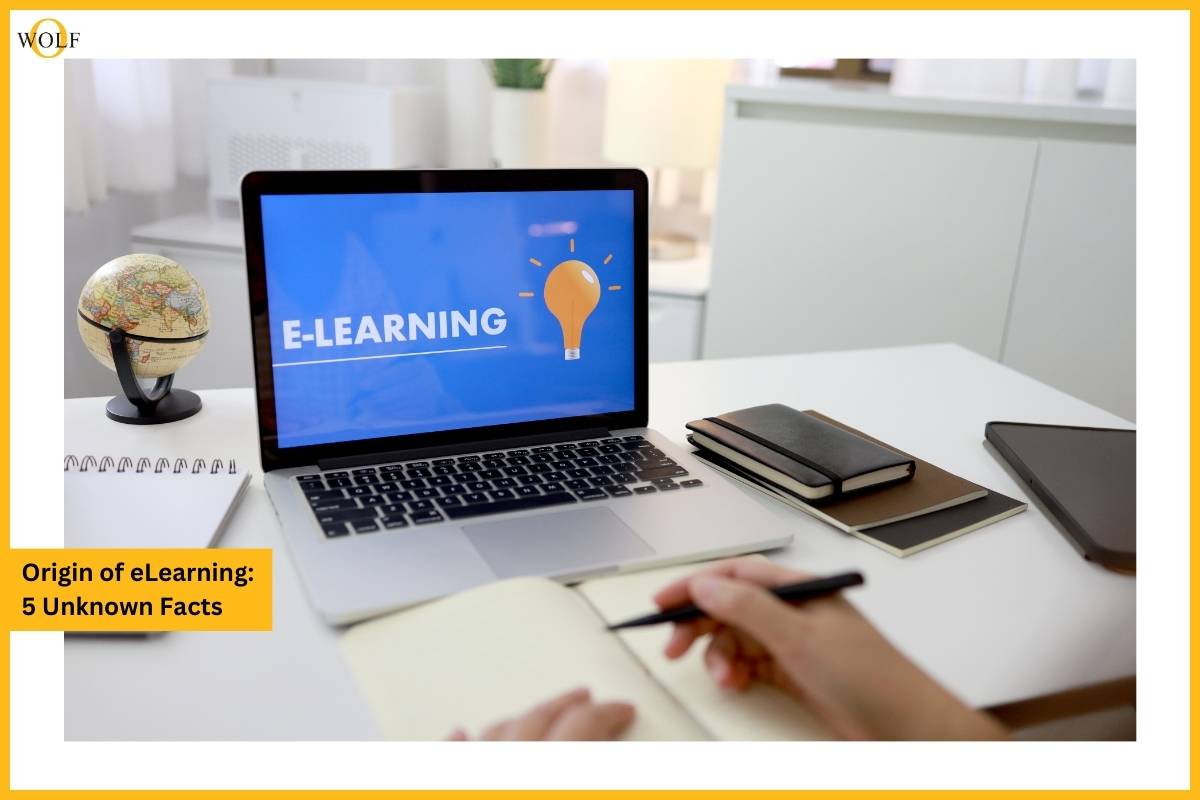The digital age has brought about significant changes in how we approach education, with it becoming a cornerstone of modern learning practices. The rise of it has revolutionized the way we access, consume, and interact with educational content. But where did it all begin? Here, we delve into the origin, uncovering five unknown facts that highlight its journey and impact on education.
The Early Roots of eLearning
Before diving into the unknown facts, it’s essential to understand the basic history. The concept of it can be traced back to the 1960s when computer-based learning systems started to emerge. The University of Illinois is often credited with creating one of the first computer-based education systems in the 1960s, utilizing the PLATO (Programmed Logic for Automatic Teaching Operations) system. This was a pioneering step in the evolution of eLearning, setting the stage for the development of more sophisticated online education platforms.
1. The Military’s Pioneering Role in eLearning
One of the lesser-known facts about the origin of it is the significant role played by the military. In the mid-20th century, the U.S. military began exploring technology to improve training and education for its personnel. During World War II, the military used film and other multimedia tools to train soldiers, laying the groundwork for future digital learning initiatives.
In the 1960s and 1970s, the U.S. Department of Defense invested heavily in developing computer-based training programs. These programs were designed to provide standardized training across various branches of the military, ensuring that all personnel received consistent and effective education. The success of these early initiatives demonstrated the potential and spurred further advancements in the field.
2. The Role of Universities in Shaping eLearning

While the military’s involvement was crucial, universities also played a significant role in the development. In the 1960s, the University of Illinois pioneered the use of computers for education with its PLATO system. PLATO was one of the first systems to provide interactive learning experiences, allowing students to engage with educational content through a computer terminal.
The success of PLATO inspired other universities to explore the potential of computer-based education. By the 1980s, many higher education institutions had begun developing their own its platforms. These early systems were often rudimentary compared to today’s standards, but they paved the way for the sophisticated online learning environments we see today.
3. The Advent of the Internet and its Impact on eLearning
The emergence of the internet in the 1990s marked a turning point in the evolution. With the advent of the World Wide Web, educational content could be easily distributed and accessed by anyone with an internet connection. This democratization of information was a game-changer for education, making learning opportunities available to a global audience.
In 1999, the term “eLearning” was coined, reflecting the growing importance of electronic learning methods. The internet facilitated the development of online courses, virtual classrooms, and educational websites, significantly expanding its reach and impact it. The ability to deliver education online broke down geographical barriers and allowed learners to access high-quality education from anywhere in the world.
4. The Role of Learning Management Systems (LMS)
Another critical development in the history of it was the creation of Learning Management Systems (LMS). An LMS is a software application that provides the framework for managing all aspects of the learning process, including the delivery of content, tracking progress, and assessing performance.
The first LMS, known as FirstClass, was developed in the 1990s. It provided a platform for online collaboration and communication, allowing educators to create and deliver content more efficiently. Over the years, LMS technology has evolved significantly, with platforms like Moodle, Blackboard, and Canvas becoming integral to modern environments. These systems have streamlined the administration of it, making it more accessible and effective for both educators and learners.
5. The Influence of Open Educational Resources (OER)
The rise of Open Educational Resources (OER) has also played a crucial role in the development of it. OER are freely accessible, openly licensed educational materials that can be used for teaching, learning, and research. The concept of OER gained traction in the early 2000s, with initiatives like MIT’s OpenCourseWare project leading the way.
The availability of OER has greatly expanded its scope, providing educators and learners with a wealth of high-quality, cost-free educational resources. This movement towards open access has helped to democratize education, making it possible for anyone, regardless of their financial situation, to benefit from top-tier educational content. The proliferation of OER has been instrumental in the global spread, ensuring that learning opportunities are available to all.
The Impact of eLearning on Modern Education

Understanding the origin and evolution of it provides valuable insights into its profound impact on modern education. Today, it is an integral part of the educational landscape, offering numerous benefits that traditional classroom settings often cannot match.
1. Accessibility and Inclusivity
One of the most significant impacts of it is its ability to make education more accessible and inclusive. Online learning platforms can reach students in remote and underserved areas, providing them with opportunities that were previously unavailable. Additionally, accommodates diverse learning styles and needs, offering personalized learning experiences that can be tailored to individual preferences and abilities.
2. Flexibility and Convenience
It offers unparalleled flexibility and convenience, allowing students to learn at their own pace and on their own schedule. This is particularly beneficial for working professionals, parents, and others with busy lifestyles who may find it challenging to attend traditional classes. The flexibility of it also supports lifelong learning, enabling individuals to continue their education and professional development throughout their lives.
3. Cost-Effectiveness
Compared to traditional education, it can be more cost-effective. Online courses often have lower tuition fees, and there are no additional costs for commuting, housing, or physical materials. The availability of free and low-cost resources, such as OER, further reduces the financial barriers to education.
4. Global Collaboration and Networking
eLearning facilitates global collaboration and networking, connecting learners and educators from around the world. Virtual classrooms, discussion forums, and social media platforms enable students to engage with peers and instructors from diverse backgrounds, enriching their learning experiences and broadening their perspectives.
5. Continuous Innovation and Improvement
It is continually evolving, driven by advances in technology and educational research. Innovations such as artificial intelligence, virtual reality, and gamification are enhancing the effectiveness and engagement of online learning. These ongoing developments ensure that it remains at the forefront of educational practice, continually improving to meet the needs of modern learners.
The Future of eLearning
As we look to the future, it is clear that eLearning will continue to play a vital role in education. The ongoing advancements in technology, coupled with the growing demand for flexible and accessible learning options, will drive the evolution of it in the coming years. Here are a few trends and predictions for the future of eLearning:
1. Increased Use of Artificial Intelligence
Artificial intelligence (AI) has the potential to revolutionize it by providing personalized learning experiences, automating administrative tasks, and enhancing student support. AI-driven adaptive learning systems can tailor content to individual needs, helping students learn more effectively and efficiently.
2. Expansion of Virtual and Augmented Reality
Virtual reality (VR) and augmented reality (AR) technologies are already making their way into it, offering immersive and interactive learning experiences. These technologies can simulate real-world scenarios, allowing students to practice skills and explore environments in a safe and controlled setting.
3. Growth of Microlearning and Mobile Learning
Microlearning and mobile learning are poised to become increasingly popular in the landscape. Microlearning involves delivering content in small, manageable chunks, making it easier for learners to absorb and retain information. This approach is particularly effective for busy individuals who may only have short periods to dedicate to learning. Mobile learning, facilitated by the widespread use of smartphones and tablets, allows learners to access educational content on the go, making learning more flexible and convenient.
4. Emphasis on Lifelong Learning and Professional Development

As the job market continues to evolve, there will be a growing emphasis on lifelong learning and professional development. It has platforms that will increasingly offer courses and programs tailored to upskilling and reskilling workers to meet the demands of a rapidly changing economy. This trend will ensure that individuals can continuously update their knowledge and skills throughout their careers.
5. Integration of Social Learning
Social learning, which emphasizes learning through collaboration and interaction with others, will become more integrated into it platforms. Online discussion forums, group projects, and social media tools will facilitate peer-to-peer learning and create a sense of community among learners. This approach leverages the benefits of social interaction, which has traditionally been a strength of traditional schooling.
Conclusion: Embracing the Potential of eLearning
The origin and evolution of it reveal a rich history of innovation and adaptation. From its early roots in military training and university research to its current status as a global educational powerhouse, it has transformed the way we approach learning and teaching. The unknown facts about its development highlight the collaborative efforts and technological advancements that have shaped its growth.
As we move forward, it is essential to embrace the potential and leverage its strengths to create a more inclusive, flexible, and effective education system. By combining the benefits of it with the valuable aspects of traditional schooling, we can ensure that all learners have access to high-quality education that meets their needs and prepares them for the future.
The ongoing advancements in technology, the growing demand for lifelong learning, and the focus on accessibility and inclusivity will continue to drive the evolution of it. As educators, policymakers, and learners, we must stay informed about these trends and developments to make the most of the opportunities.






